Living root bridges are suspension bridges made of rubber plant roots, predominantly found in the dense tropical rainforests of Meghalaya. The bridge ranges in length from 15 to 250 feet and is grown by the Khasis over a period of 15 to 30 years. It can last for several centuries.
It was first built by Khasi ancestors a couple of hundred years ago, using only locally available materials, skills, and tools at a time when concrete and steel had not yet been discovered. Nowadays, they use fiber ropes or steel wires to tie bamboo scaffold supports only during the initial development stage. Apart from this, the construction of live root bridges in modern times still involves only indigenous forest products.
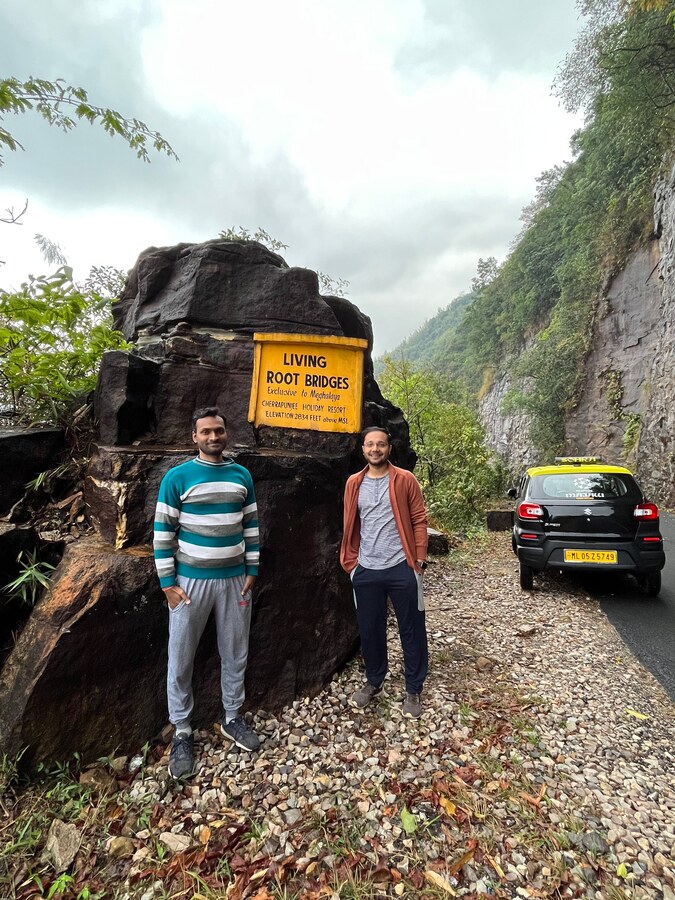 Aryan and Me
En route to the Tyrna village, which serves as the starting point for the nongriate double-decker bridge trek.
Aryan and Me
En route to the Tyrna village, which serves as the starting point for the nongriate double-decker bridge trek.
Picture credit: @paul taxi driver
Living root Bridge
Construction
The Khasi people join the aerial root fibers of the rubber tree (Ficus) by twining them over lakes or rivers. These twined fibers are then placed in a hollowed-out trunk of the areca catechu (betel nut) tree, where they serve as both a support and a fertilizer, helping the roots to grow faster. Initially, this assemblage is structurally supported by a bamboo scaffold that serves as a temporary river bridge crossing.
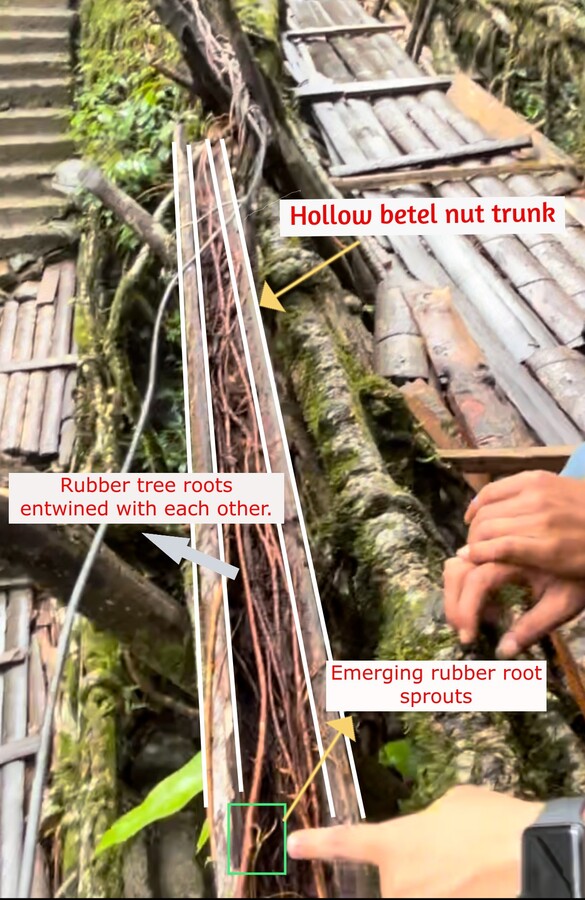 Here I am pointing at the rubber root sprouts that are emerging from the newly twined aerial roots of a rubber tree, placed inside a hollow betel nut trunk.
Here I am pointing at the rubber root sprouts that are emerging from the newly twined aerial roots of a rubber tree, placed inside a hollow betel nut trunk.
This assemblage will eventually grow into a fully formed living root bridge for people to pass through, which is expected to take around 15 years.
As time passes and the aerial root grows stronger and thicker, the areca catechu (betel nut) trunks are no longer needed. However, it is necessary to periodically replace the green bamboo poles at both ends until the root bridge matures. Over a period of 15 to 30 years, the root assemblage becomes strong and stable enough to support human and material weight without the initial bamboo support. Stones, dry leaves, and dead tree trunks are added to the bridge as dead load, which fills the gaps between the twined roots.
Advantages
- Older, more mature bridges are capable of carrying up to 30 people at once.
- Based on multiple accounts and documentation, it can be said that the structural capacity of living root bridges in Meghalaya’s remote and wet tropical landscape is superior to that of steel and bamboo bridges. Concrete bridges have an average lifespan of around 40 to 50 years, and bamboo bridges are susceptible to annual failure and deformation in these wet tropical areas due to heavy water loads during monsoon season. Similarly, steel bridges require periodic maintenance due to high rains.
Challenges
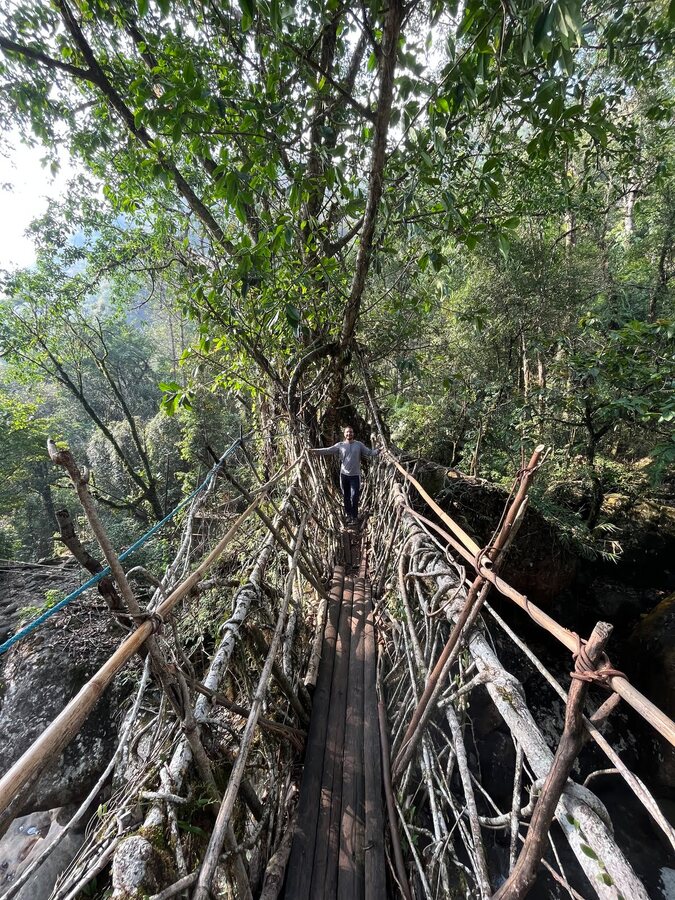 Me standing at the end of the relatively new root bridge, which is still in its initial stage and cannot be used to cross with weight. This will take a couple more years before people can regularly use it for day-to-day crossings.
Me standing at the end of the relatively new root bridge, which is still in its initial stage and cannot be used to cross with weight. This will take a couple more years before people can regularly use it for day-to-day crossings.
Picture credit: @aryan
- The primary challenge of a living root bridge is its long setting period, which can range from 15 to 30 years.
- The safety of the bridge is low during the early growth stage when it cannot be used to cross.
Notable Root Bridges in Meghalaya
- Nongriate, located near Sohra (Cherrapunji), features two matured root bridges, with one spanning 40 feet and the other spanning 50 feet, stacked one on top of the other.
- Riwai, located near Mawlynnong, boasts a 75-foot root bridge in its mature stage.
- Mawkyrnot, located near Pynursla, has one of the longest root bridges measuring 250 feet, but it is in its less mature stage.
Nongriate Double Decker root bridge trek
Nongriate village, near Sohra (Cherrapunji), is a popular attraction due to its 200+ year old double decker root bridge, which is a testament to both its high level of maturity and safety. Due to its popularity and proximity to Sohra, we decided to embark on this root bridge trek. The upper root bridge here is approximately 50 feet long and is over 100 years old. The lower root bridge is around 40 feet long and is one of the oldest in Meghalaya, estimated to be over 200 years old according to a local bridge caretaker volunteer.
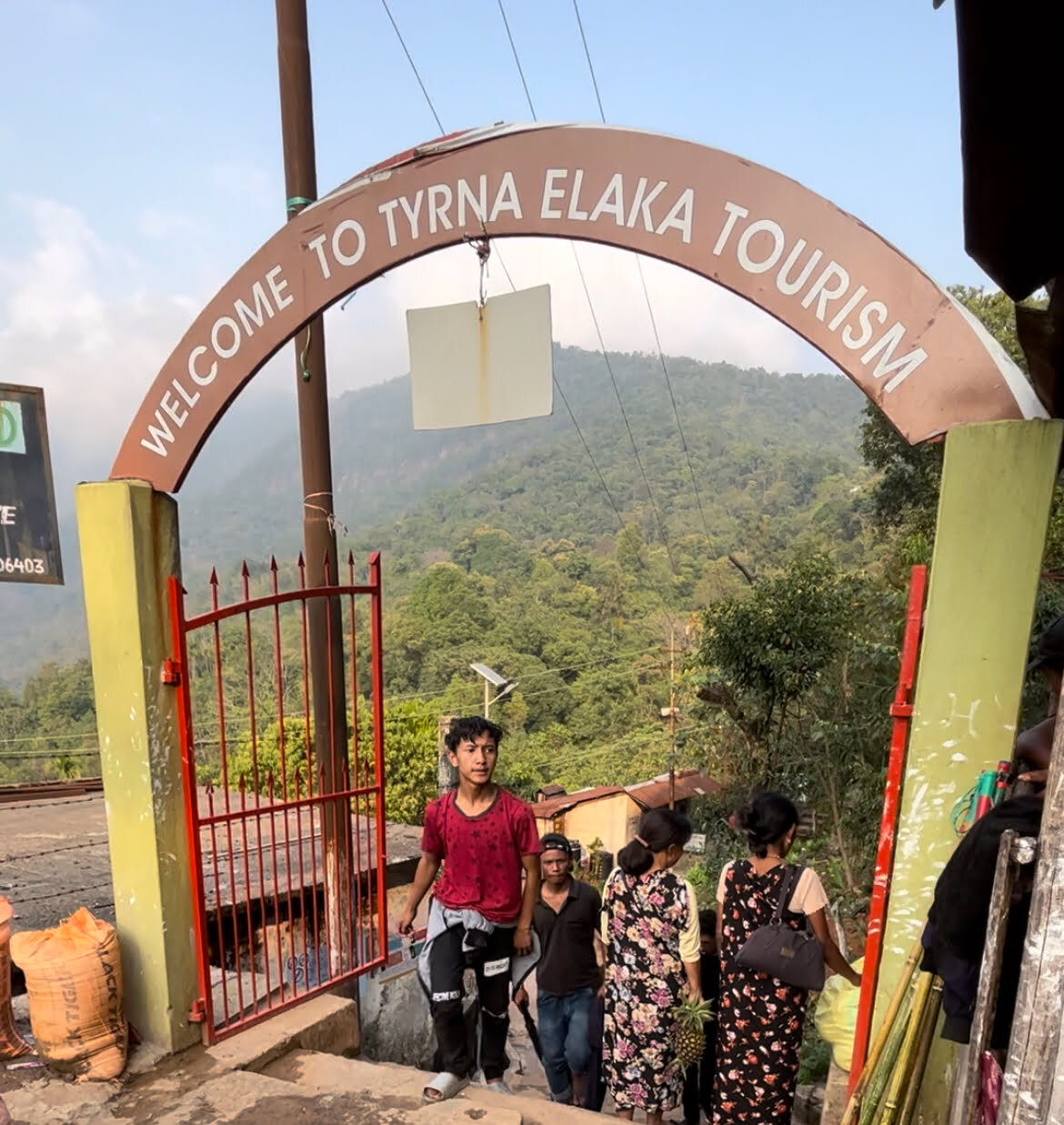 Starting point of the trek at Tyrna village, captured in the evening at the end of an 8-hour trek.
Starting point of the trek at Tyrna village, captured in the evening at the end of an 8-hour trek.
Picture credit: @aryan
The trek, totaling around 6km to and fro, involves a bit of steep ascent and descent while starting from and returning to the Tyrna village, but it’s an easy trek and doable for a moderately active person. The cemented stairs lead through a beautiful rainforest surrounded by lush greenery, with a mix of suspension and small root bridges over the seasonal river stream.
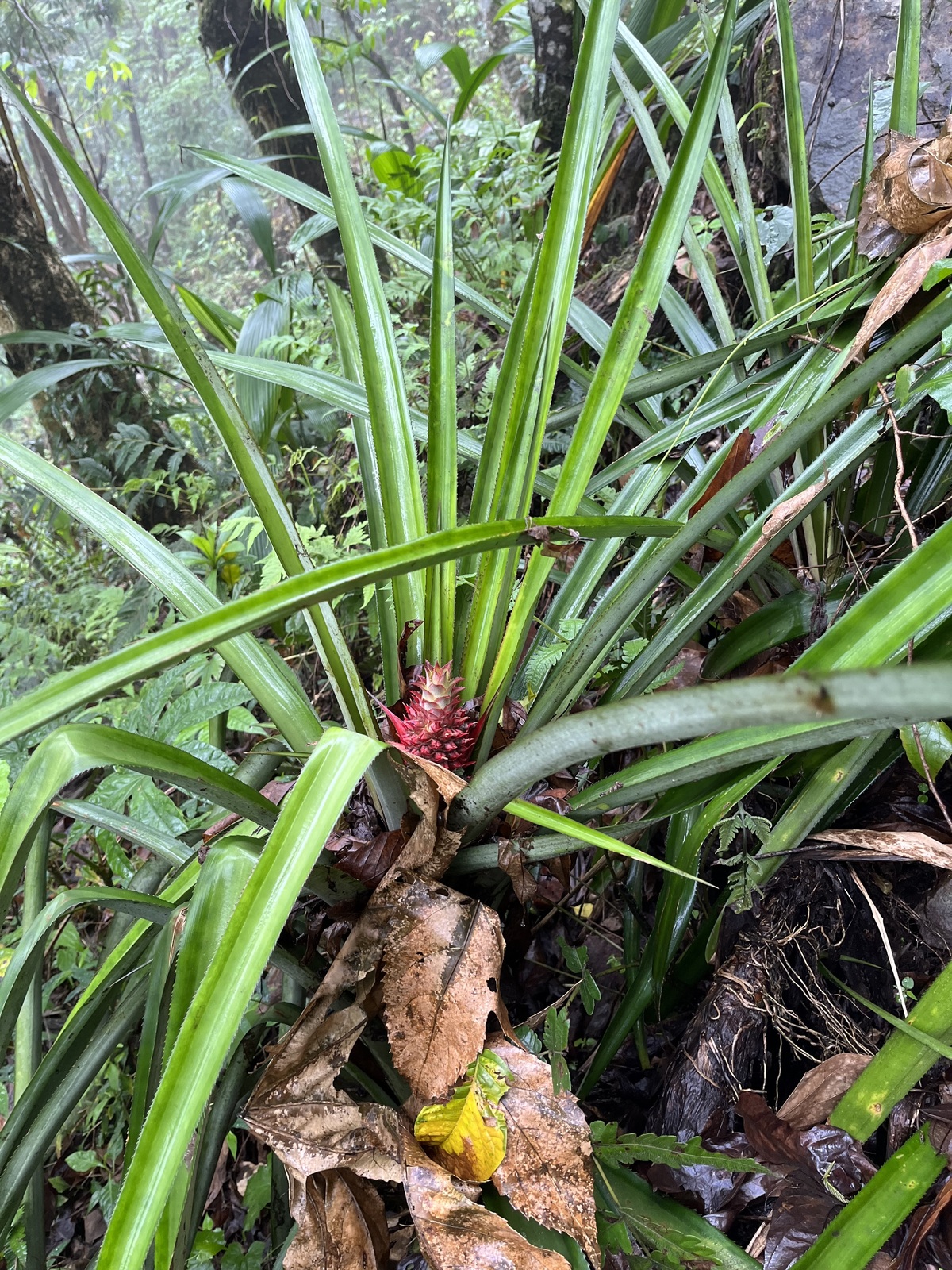 Forest pineapple en route to the double-decker bridge.
Forest pineapple en route to the double-decker bridge.
Picture credit: @aryan
we witnessed several forest fruits such as pineapple, jackfruit, wild berries, mango, and more growing naturally. We were also introduced to various fruits that possess medicinal benefits like the white mountain pepper, which our guide Roy offered us to taste. The mint-flavored taste of the pepper lingered for more than 15 minutes.
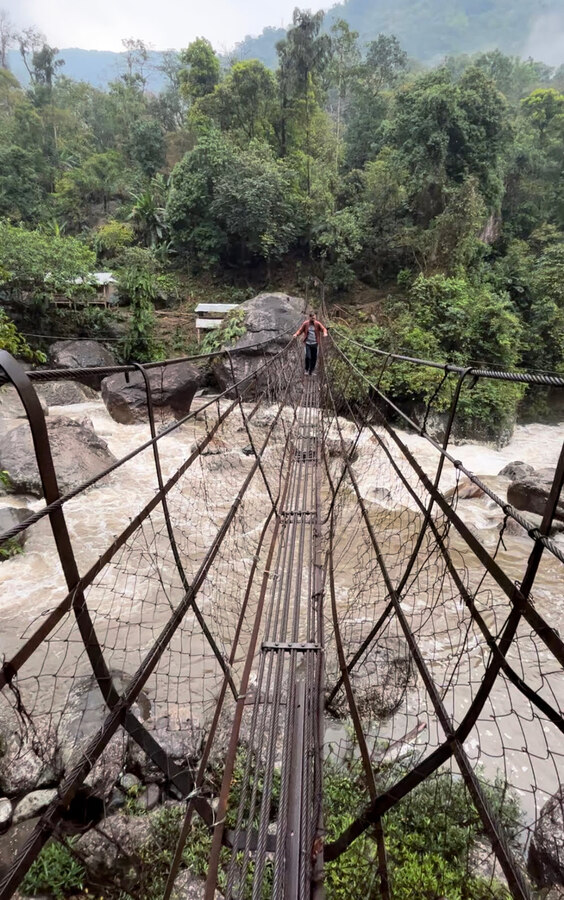 I am passing the small suspension bridge. Multiple such suspension bridges can be found en route to the double decker bridge.
I am passing the small suspension bridge. Multiple such suspension bridges can be found en route to the double decker bridge.
Picture credit: @aryan
There are a total of 3,500 steps from the trek start point at Tyrna village to the double-decker bridge. Along the way, there are a few snack stores. Once you reach the bridge, you’ll be greeted with an out-of-this-world natural wonder: a beautifully crafted double-decker live root bridge and a clear, serene stream flowing beneath it. For a nature lover, the stunning view makes the trek worth all the effort.
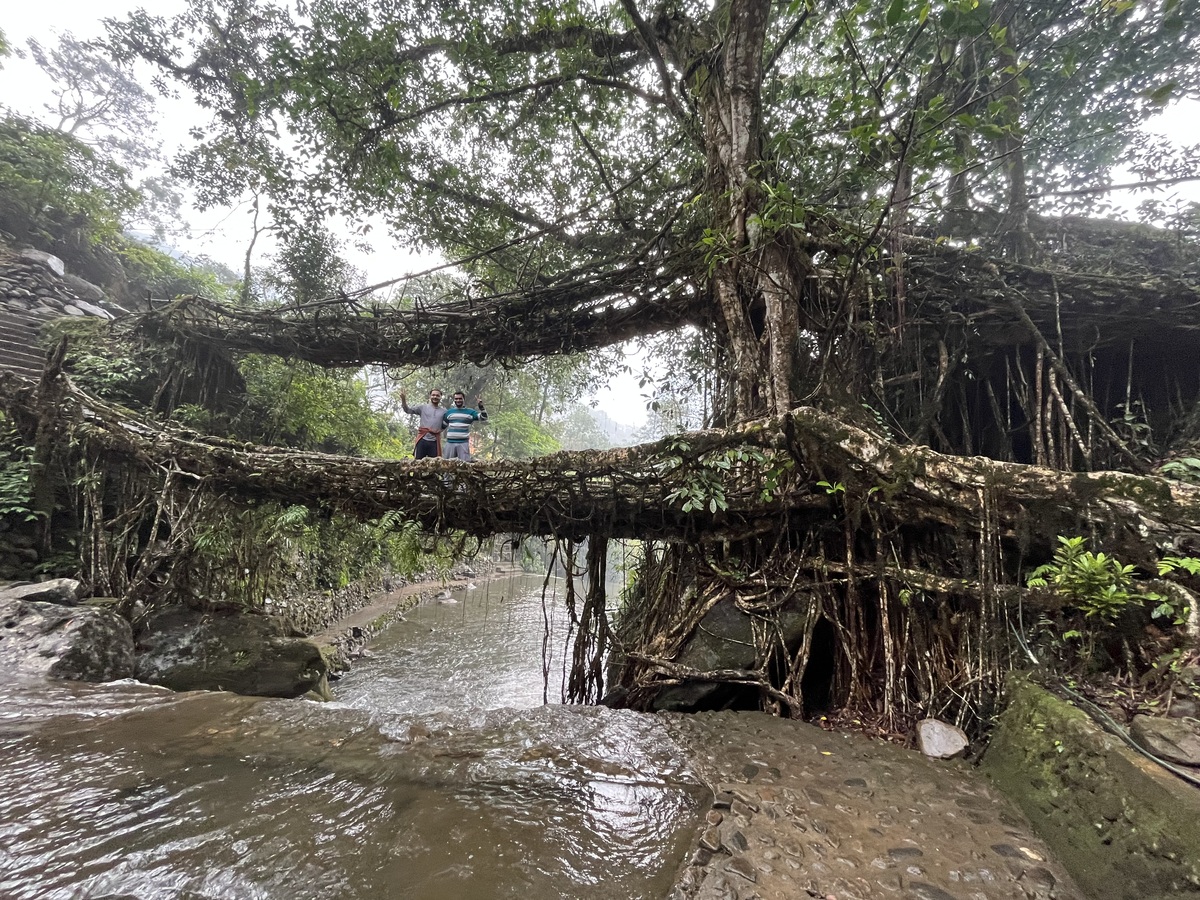 Me and Aryan on the double-decker bridge.
Me and Aryan on the double-decker bridge.
Picture credit: @Roy, our guide
I had a session of around 90 minutes with our guide Roy, during which he explained the process of constructing live root bridges and other features. We had a detailed discussion, as stated in the above thread. Then we set off for our next trekking adventure to Rainbow Falls.
Rainbow Falls trek
The trek to Rainbow Falls is approximately 3 km from the double-decker bridge, and it mostly runs through nature trails instead of cement steps like the ones leading to the bridge. Rainbow Falls gets its name from the rainbows that can be seen in the mist generated by the waterfall on sunny mornings.
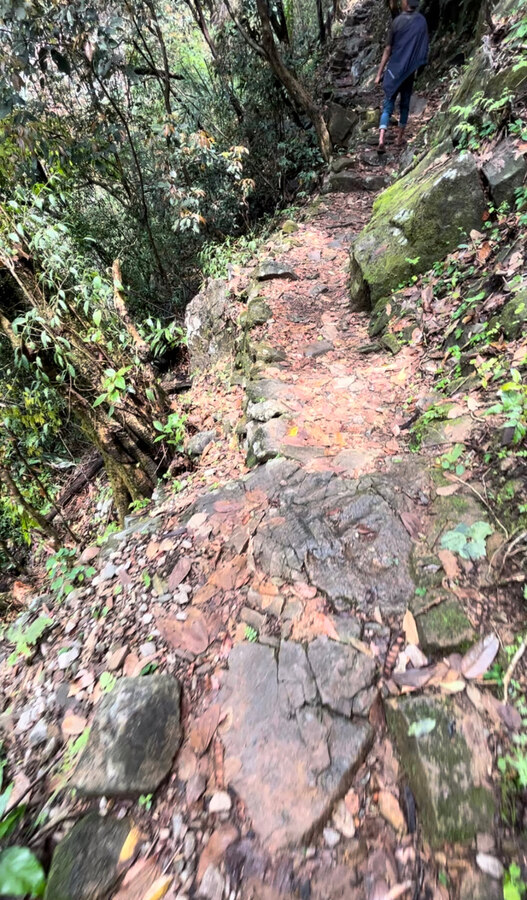 Trail through nature leading to Rainbow Falls.
Trail through nature leading to Rainbow Falls.
Picture credit: @aryan
The trek passes through denser rainforest and steeper terrain, leading to a beautiful waterfall of considerable height that is a delight to behold. Visitors can bathe in the water pool during non-monsoon periods. However, during monsoon season, the waterfall is filled with forceful water and swimming is not recommended. The trek from the Double Decker bridge to the waterfall took us 70 minutes.
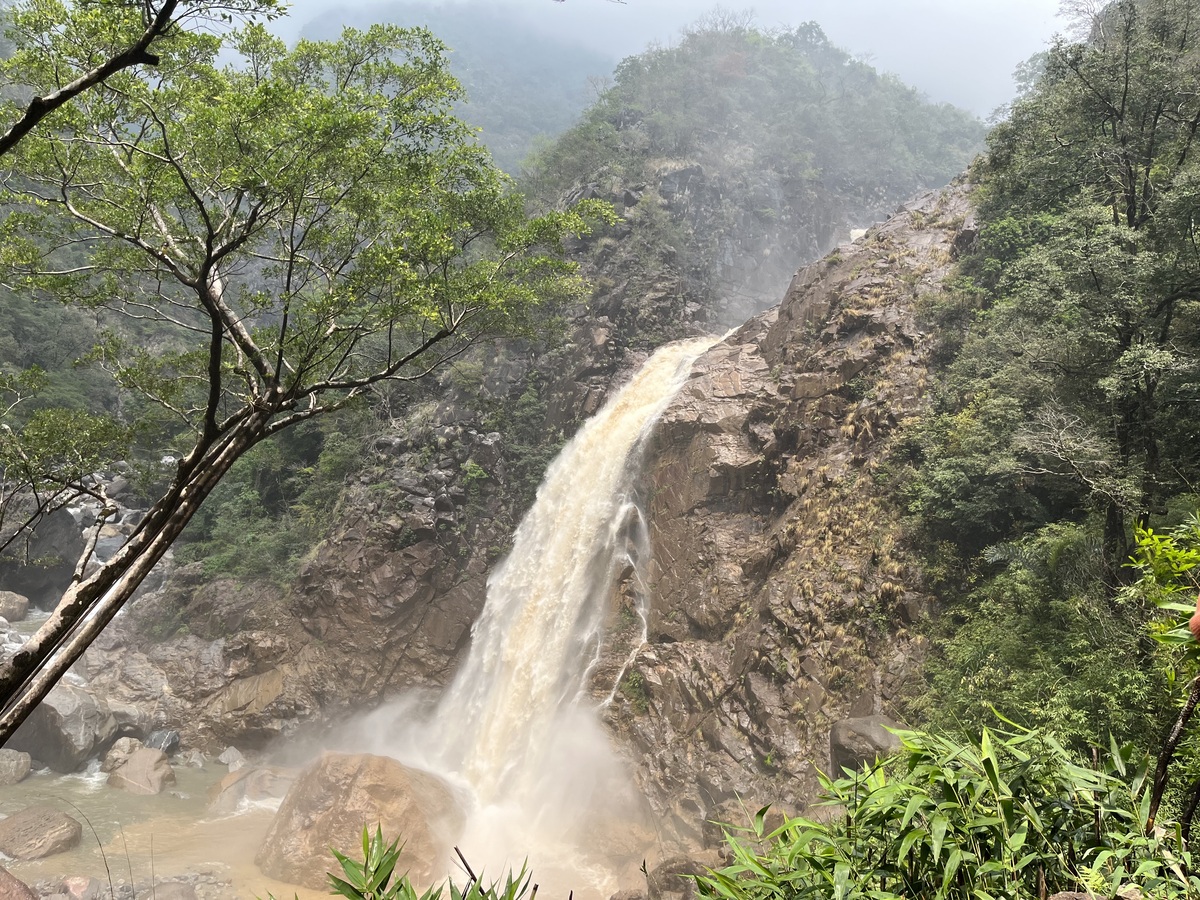 Rainbow Falls.
Rainbow Falls.
Picture credit: @aryan
We took around 3.5 hours to return from Rainbow Falls to Tyrna village (the trek starting point), with 20 minutes break at double decker bridge.
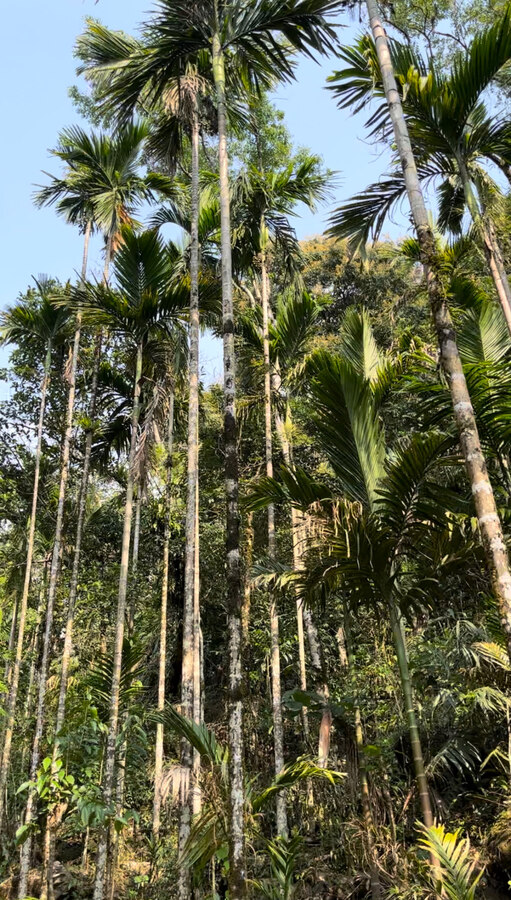 There are many commercial betel nut tree plantations at the beginning of the trek at Tyrna.
Picture credit: @aryan
There are many commercial betel nut tree plantations at the beginning of the trek at Tyrna.
Picture credit: @aryan